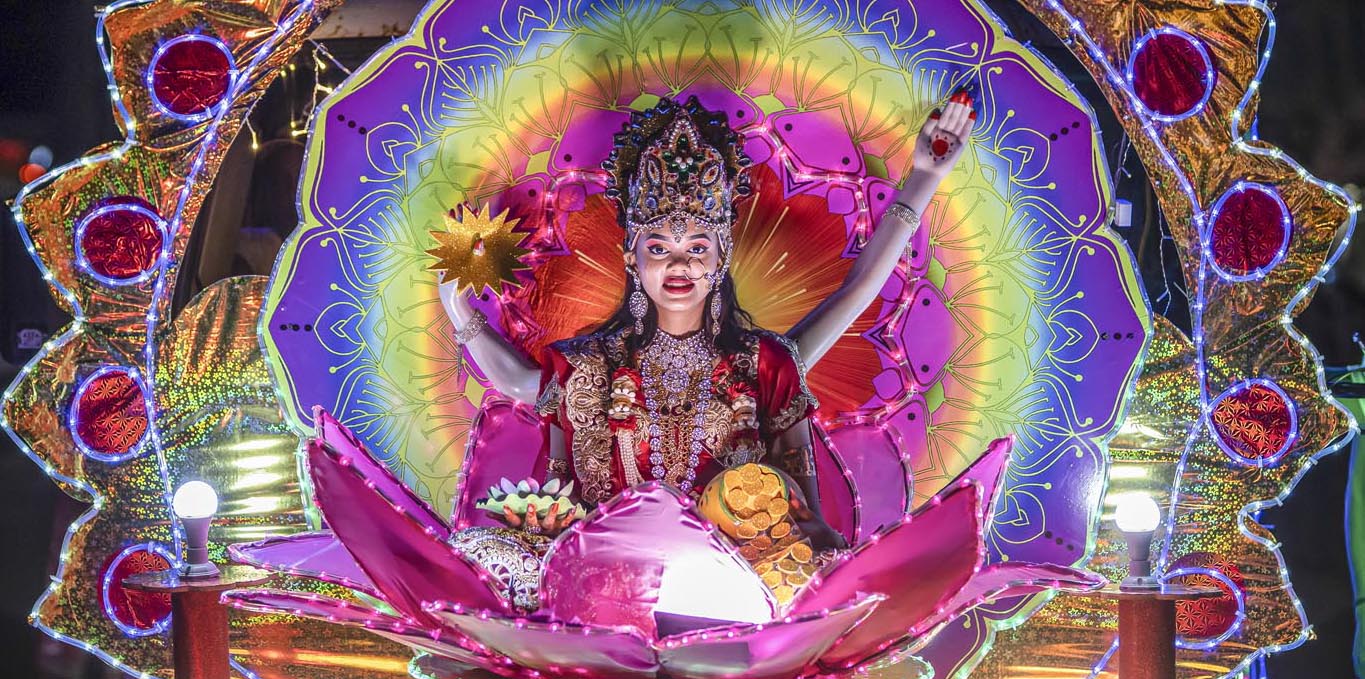Temples and organizations across the country decorate elaborate floats in Hindu themes that wend their way through Georgetown at night
By Onicka Jones, Guyana
After a two-year hiatus due to the Covid-19 pandemic, the Guyana Hindu Dharmic Sabha’s highly anticipated Diwali Motorcade has returned to the streets of Georgetown with much grandeur and creativity, dazzling the eyes of Guyanese and visitors from all walks of life.
The motorcade is unique to Guyana, which is 25% Hindu and the only English-speaking country in South America. It is organized by the Guyana Hindu Dharmic Sabha for the eve of Diwali, as a culmination of several motorcade parades held across the country.
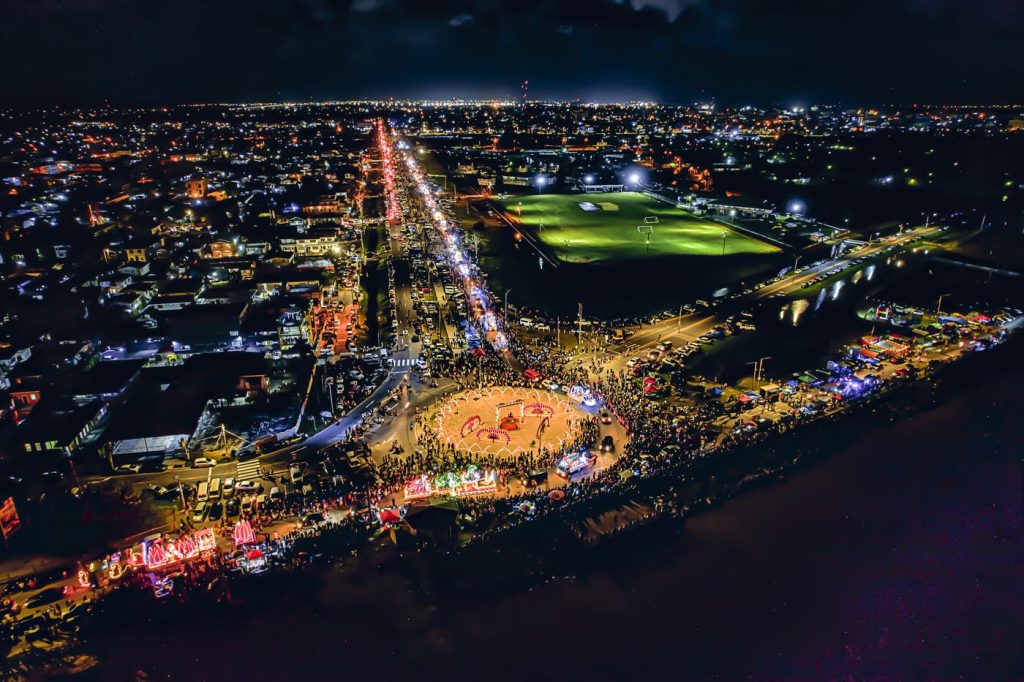

On October 23, 2022, photographer Julian Cardogan and I ventured into the streets to witness the procession as it took off from the Shri Krishna Mandir, Georgetown, where the event was inaugurated some 48 years ago. It concluded at the La Bonne Intention (LBI) Centre Ground on the east coast of Demerara. There, thousands of spectators had gathered for the cultural show, which featured local and international performers, food and the judging of floats that participated in the parade. Among the spectators were Guyana’s president, Dr. Mohamed Irfaan Ali, and members of the diplomatic community.
We spoke with several attendees. Pandit Krishna of the Guyana Hindu Dharmic Sabha, explained: “It’s like a fresh start, and bigger in comparison to the previous years. There are a lot more floats, decorations, and appearances on the floats. We always try to improve on the previous year’s design. There is no limitation to what we do.”
“I come every year,” Lakeram told us. “It is much larger this year, tripled in the number—I think about 40 floats. Everybody likes the lights.” Jean concurred: “Every year I dedicate my time to come to see the floats. For two years we did not see it, so it is nice to see this again.”
As we traveled along the motorcade route, the focus of the night was on the train of well-lit floats—trucks, trailers and other vehicles—as they made their way from the various mandirs, showcasing their beauty and craftsmanship to convey the unifying message of Diwali.
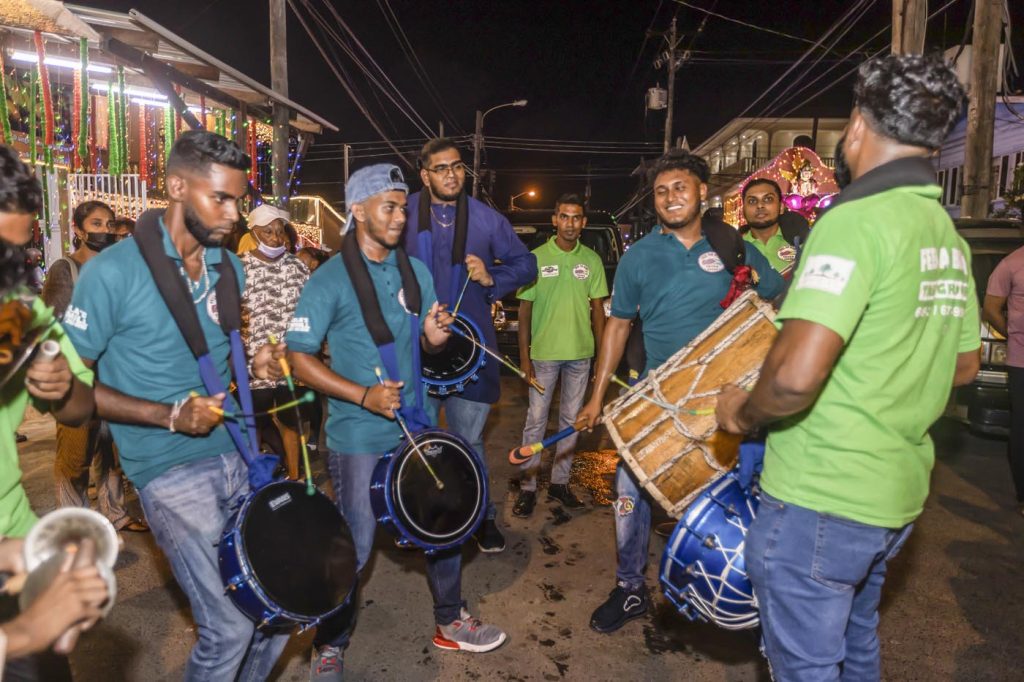

Bringing People Together
The event is the brainchild of the late Guyanese pandit Reepu Daman Persaud. I spoke with his daughter, Dr. Vindhya Persaud, who related that when conceptualizing the motorcade, her father emphasized the unifying nature of the festival. Diwali’s focus is light, sending messages about the triumph of good over evil, light over darkness, positivity over negativity, righteousness over unrighteousness and justice over injustice.
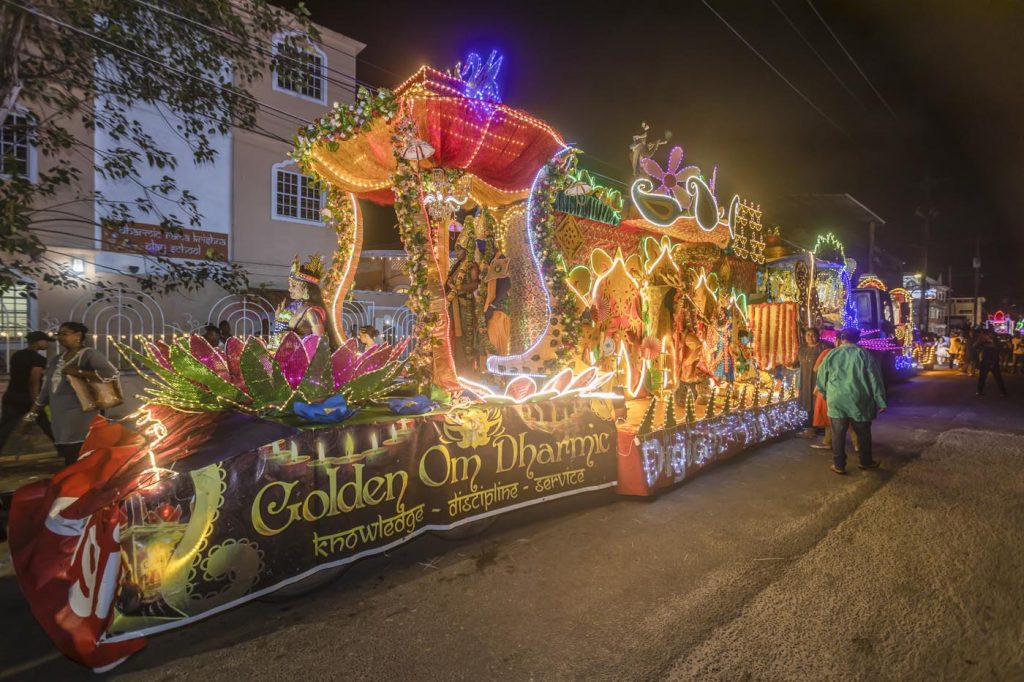

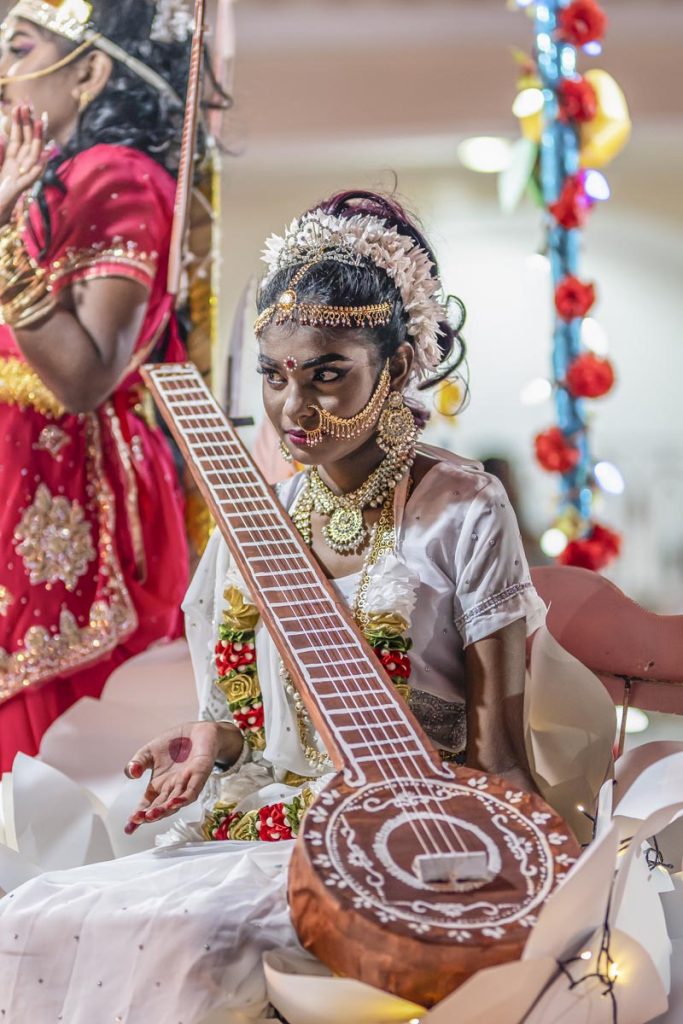

She proudly expressed that her father was a strong believer in uniting people and sharing the positive messages of Hinduism in a manner that everyone could understand, and the Diwali Motorcade created the platform to do so. “It is the single most powerful unifying event in Guyana. It brings together hundreds of thousands of people from all walks of life in a very positive and beautiful environment. You have the motorcade moving through the streets, and it is a spiritual journey.”
Over the years, the Diwali Motorcade has evolved into an activity for the entire family, with groups of people congregating at mandirs throughout the country to participate or view the final touches, while others line the streets to witness the creativity on display and listen to the bhajans and drums throughout the journey.
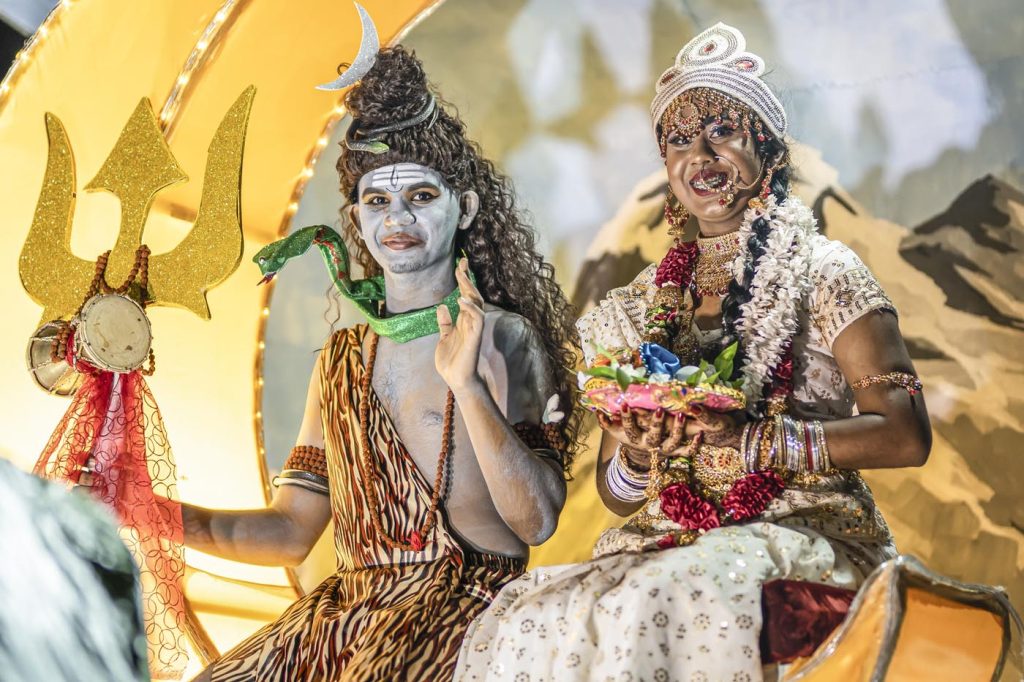

“The creation of each float requires teams of people, whether a community, youth group, organization or temple,” Persaud explained. “Young people have a pivotal role: they are at the front of the floats, depicting the various messages and themes that are associated with the Diwali festival and portraying the various forms of that one God.”
Persaud pointed out that the activities surrounding the preparation of the floats are a teaching moment for those involved. When families get together and the children ask questions, it starts the conversation. For those who are involved in the floats, it becomes an opportunity to share their experiences and understanding of the deeper, more spiritual meaning of Diwali. In this way the motorcade helps to keep Hinduism alive.
“Those who create the floats highlight the various forms of the Goddess Astha Lakshmi, the story of Lord Siva. And they celebrate the return of Ram from Ayodhya—with the lights here being a reminder of how the people celebrated that even by lighting the path,” she stated.
In northern India, Diwali is regarded as commemorating Prince Ram’s triumphant return to the city of Ayodhya after 14 years of exile due to the plotting of his evil stepmother and after the heroic rescue of his wife Sita, an incarnation of Lakshmi, who had been kidnapped by the rival king Ravana.
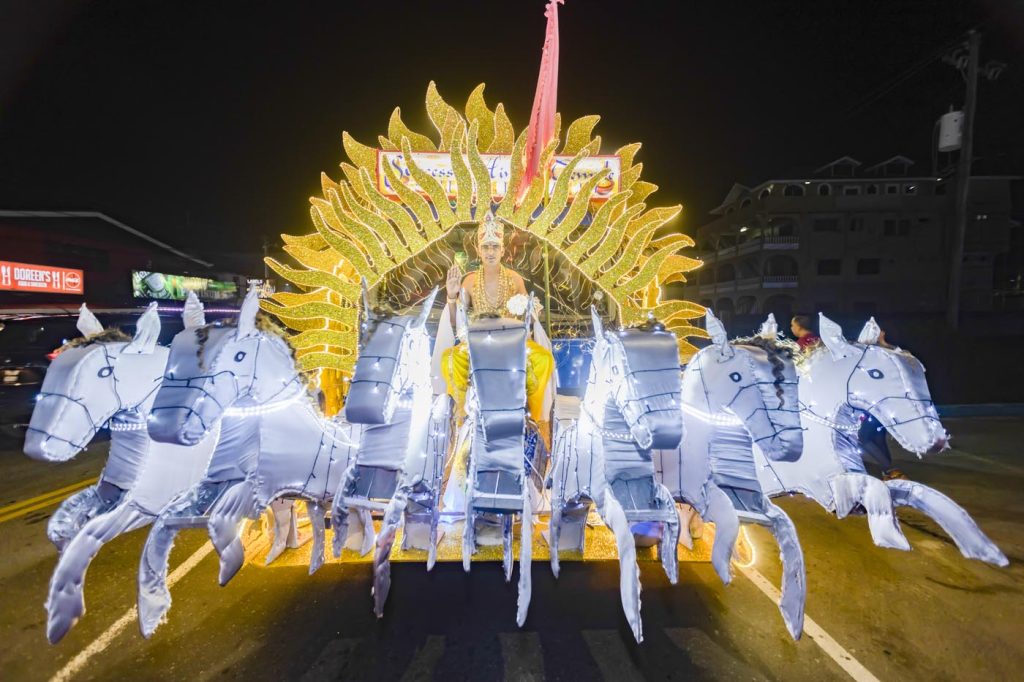

Evolution
From very simple beginnings, the floats have evolved over the years to become today’s creative masterpieces, some of which require nearly two months to gather all the needed materials and build the floats. “Back in the day,” Persaud recalled, “we would decorate with a string of fairy lights. Then people started to use pictures. Later they began adding young people and LED lights. The floats evolved with the availability of technology and more decorative material. What is beautiful is that it is all locally handcrafted.”
Pandit Krishna told us it is evident that young people in Guyana are well on their way to keeping the tradition alive. “If you look at the floats, you see a lot of youngsters. Even most of the organizers of the floats are youngsters. The Guyana Hindu Dharmic Sabha has a youth group, Dharmic Naujawaan, and every year they outdo themselves with preparations for Diwali.”
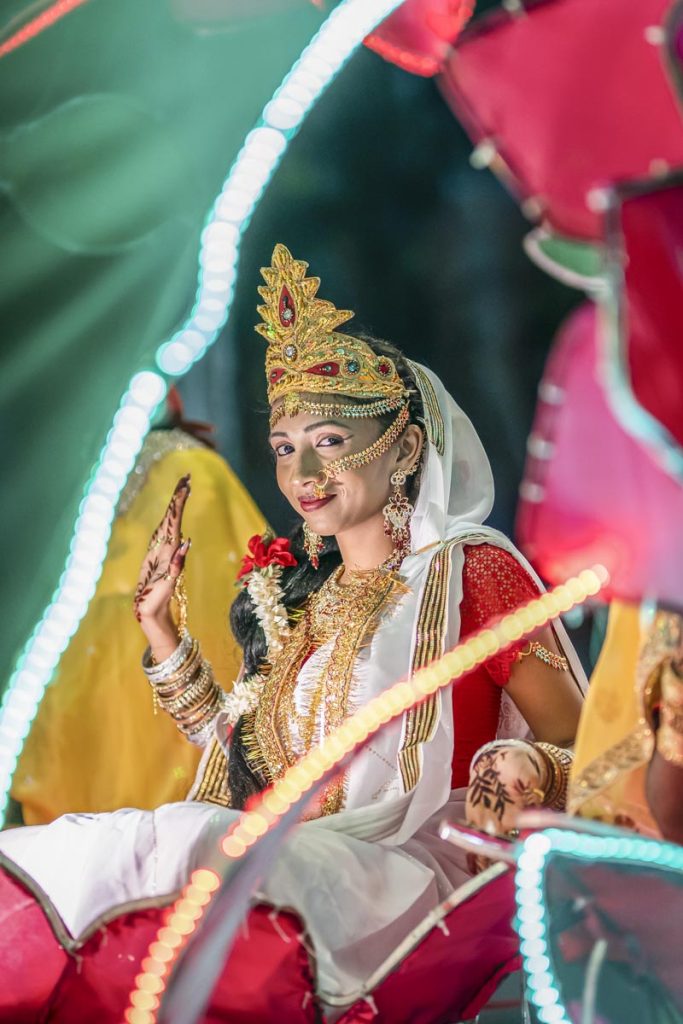

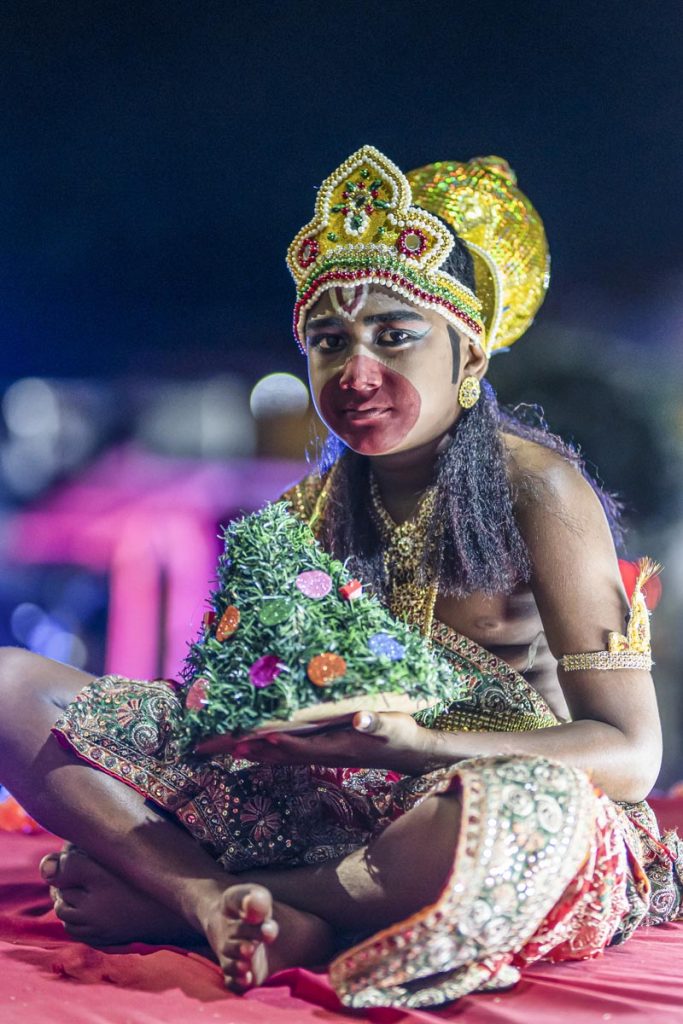

Cross-Cultural Appeal
The participation of people of all cultures and religious beliefs demonstrates the unifying nature of this Hindu festival of lights. Several companies have been sponsoring the floats. Others support the event with creative designs and by handling logistics.
“I think the world watched,” said Persaud. “I think it was breathtaking to see our people come out in such a dignified and unified way to celebrate this festival. This was something to marvel at—celebrating so many positive things in a world which has many negativities and chaotic moments where people are struggling with the cost of living and wars.We will always keep it alive because of its tremendous appeal to people. It is very clean, family-oriented, and beautiful in so many ways.”
Rajesh Dubraj, president of the Providence Hindu Temple, calls on Guyanese in the diaspora to return home to participate in the Diwali celebration and get a first-hand view of the transformation of the motorcade since it was first conceptualized.
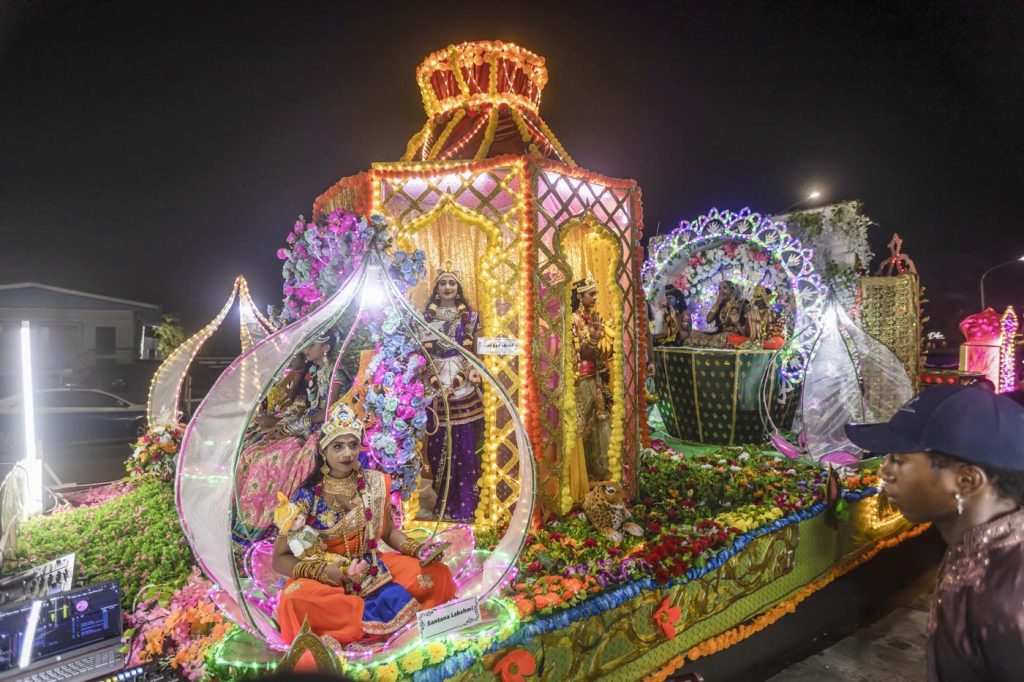

Over 30 years ago, Auntie Maggie sat on one of the floats representing the Middle Road Mandir. Today she said her wish is to see young people carry on the tradition. “It all depends on their upbringing whether they will follow the tradition or not. As you know, young people today generally do not want to be a part of things like this,” she said.
In an interview with the Department of Public Information, business owner Adaliya Culpepper mentioned that the motorcade is great for the economy. “It’s very beneficial to small business owners. Because, you know, for the past couple of years, we had Covid. I think it’s really good that we’re opening our country again to celebrate and allow the small man to make profits on holidays like this.”
Depicting Mother Lakshmi on one of the floats was a young woman named Divina. She told us she was excited to participate and looked forward to the final judging of floats. Despite having to sit still for the duration of the journey, she was visibly enthused to participate. “It is my first year, and I’m excited,” she exclaimed.
What is certain is that the Diwali Motorcade has become a tradition on the national calendar—one that brings together the country’s diverse multi-ethnic, multi-cultural society into a single community that embraces and celebrates its oneness. And the inspiration is spreading: Guyanese in the New York area have started their own yearly float parade.
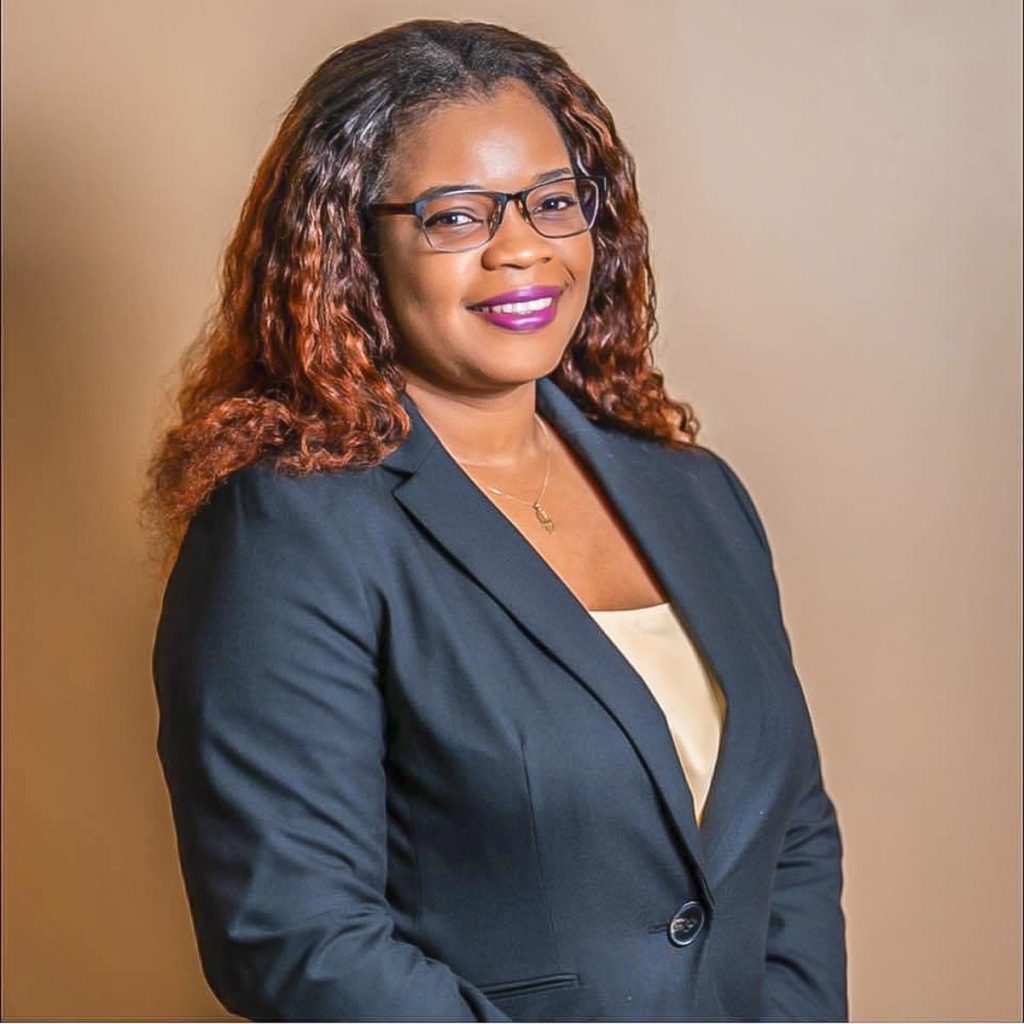

About the Author
Onicka Jones is a media and business communication professional with over 15 years’ experience in print and broadcast journalism and public relations. She volunteers in disaster risk reduction and management.


